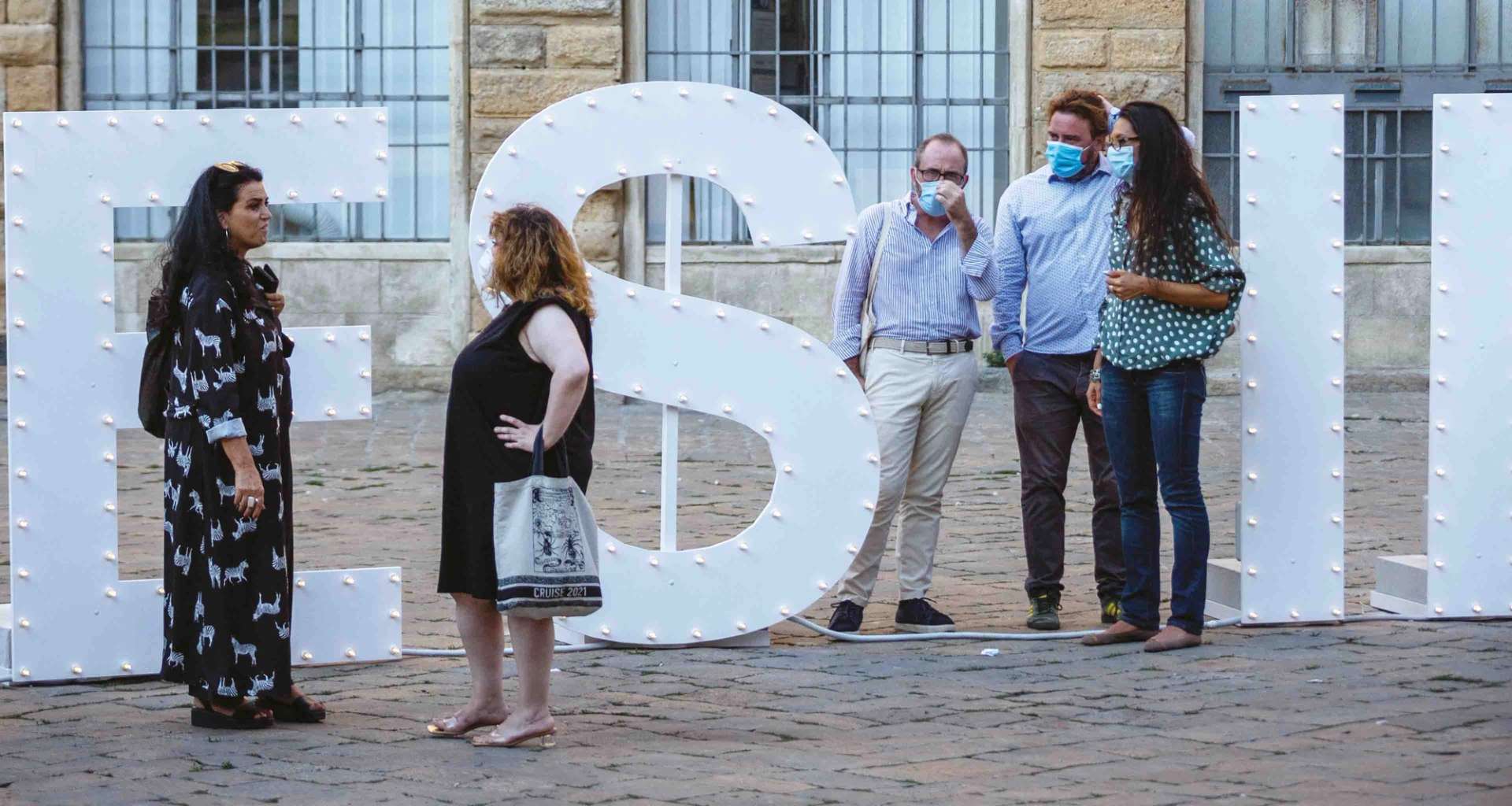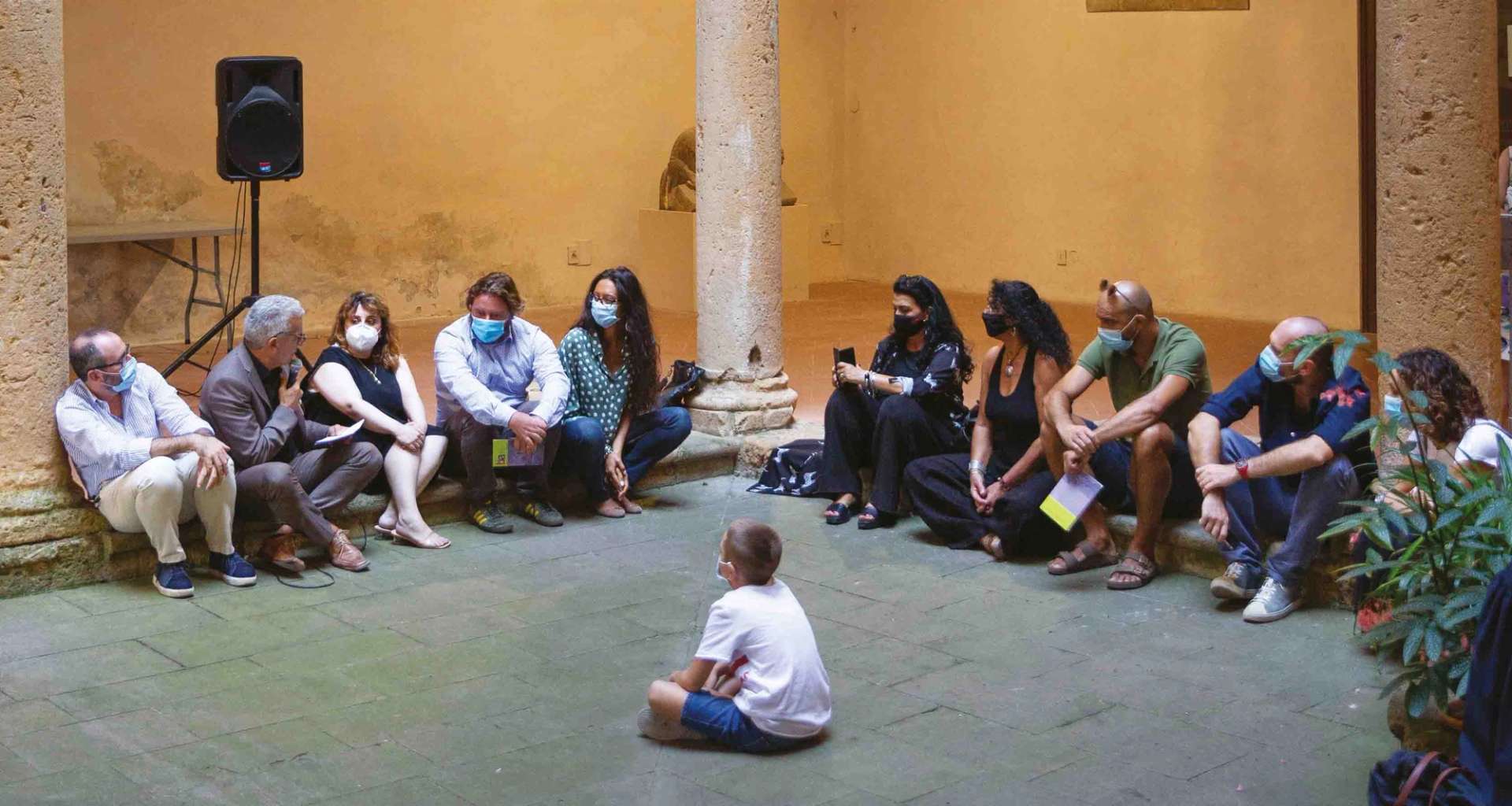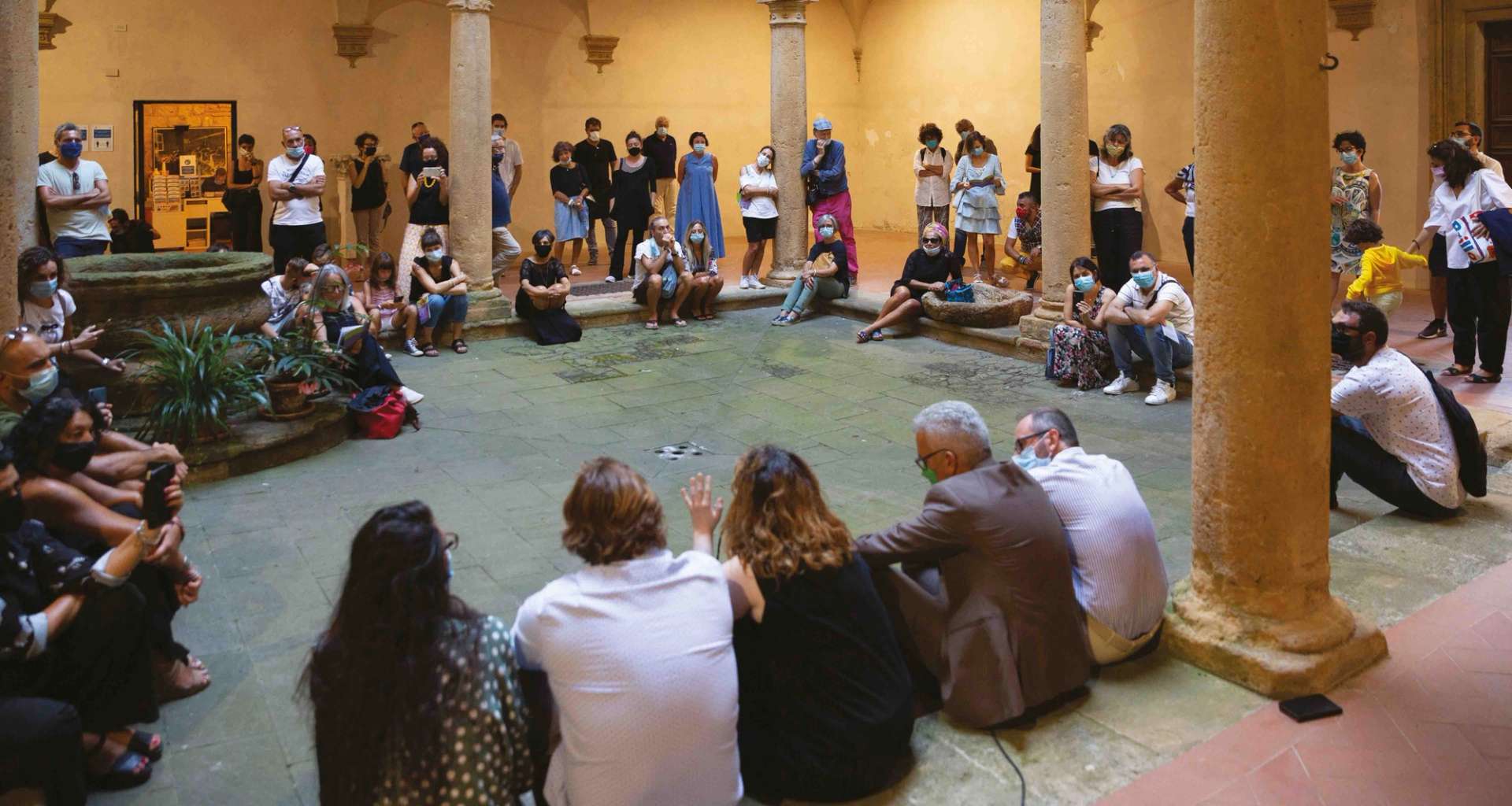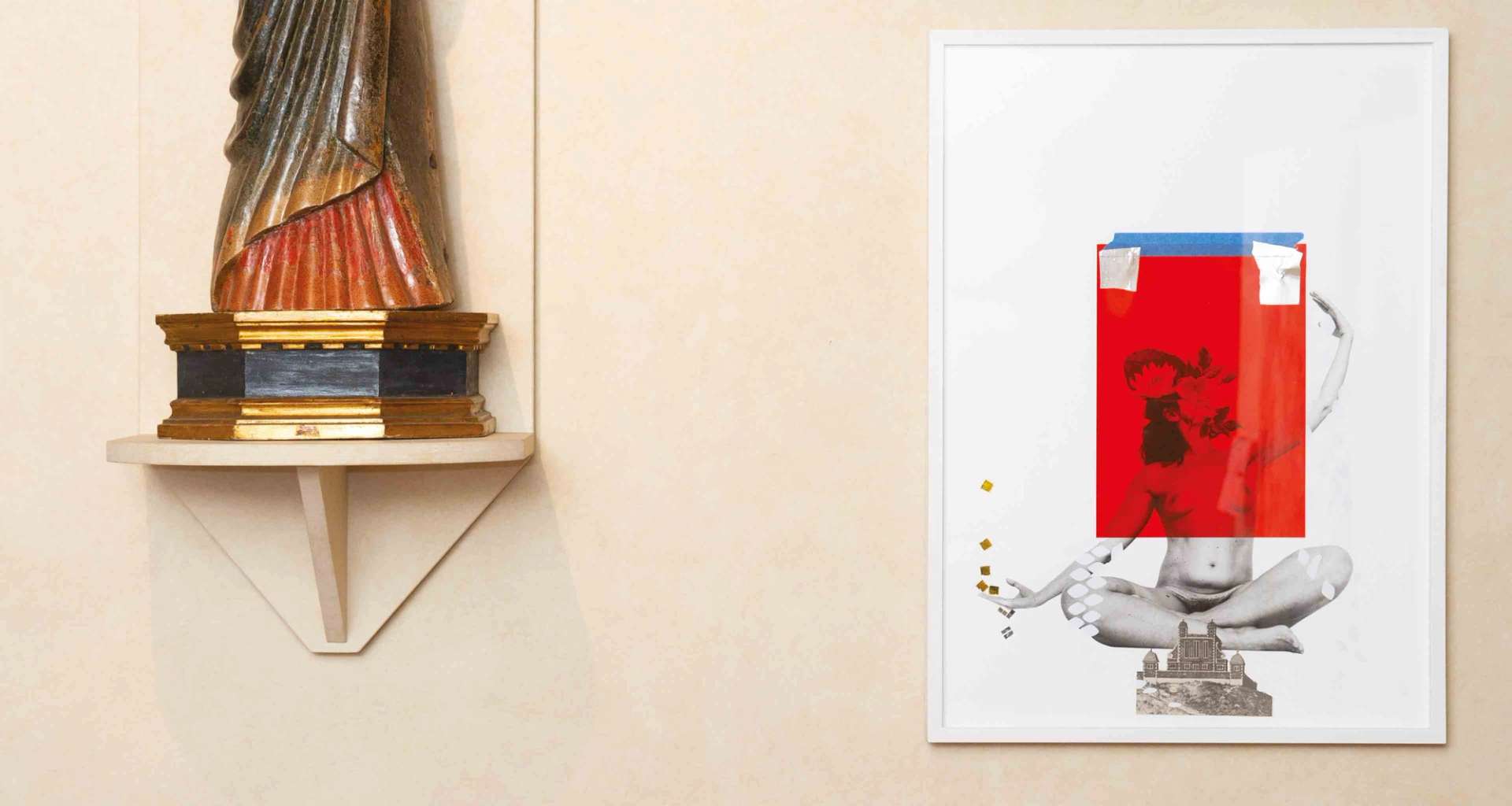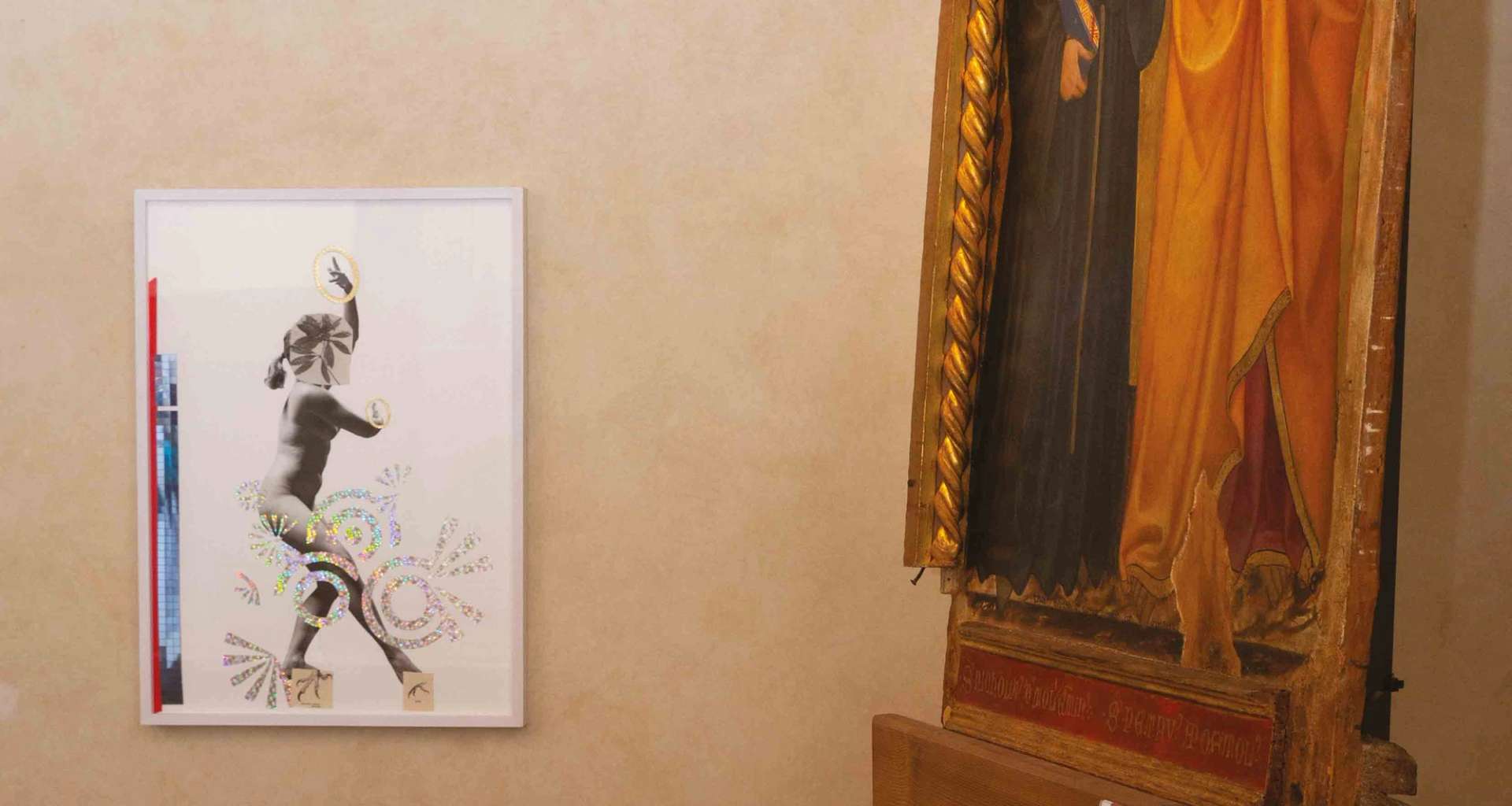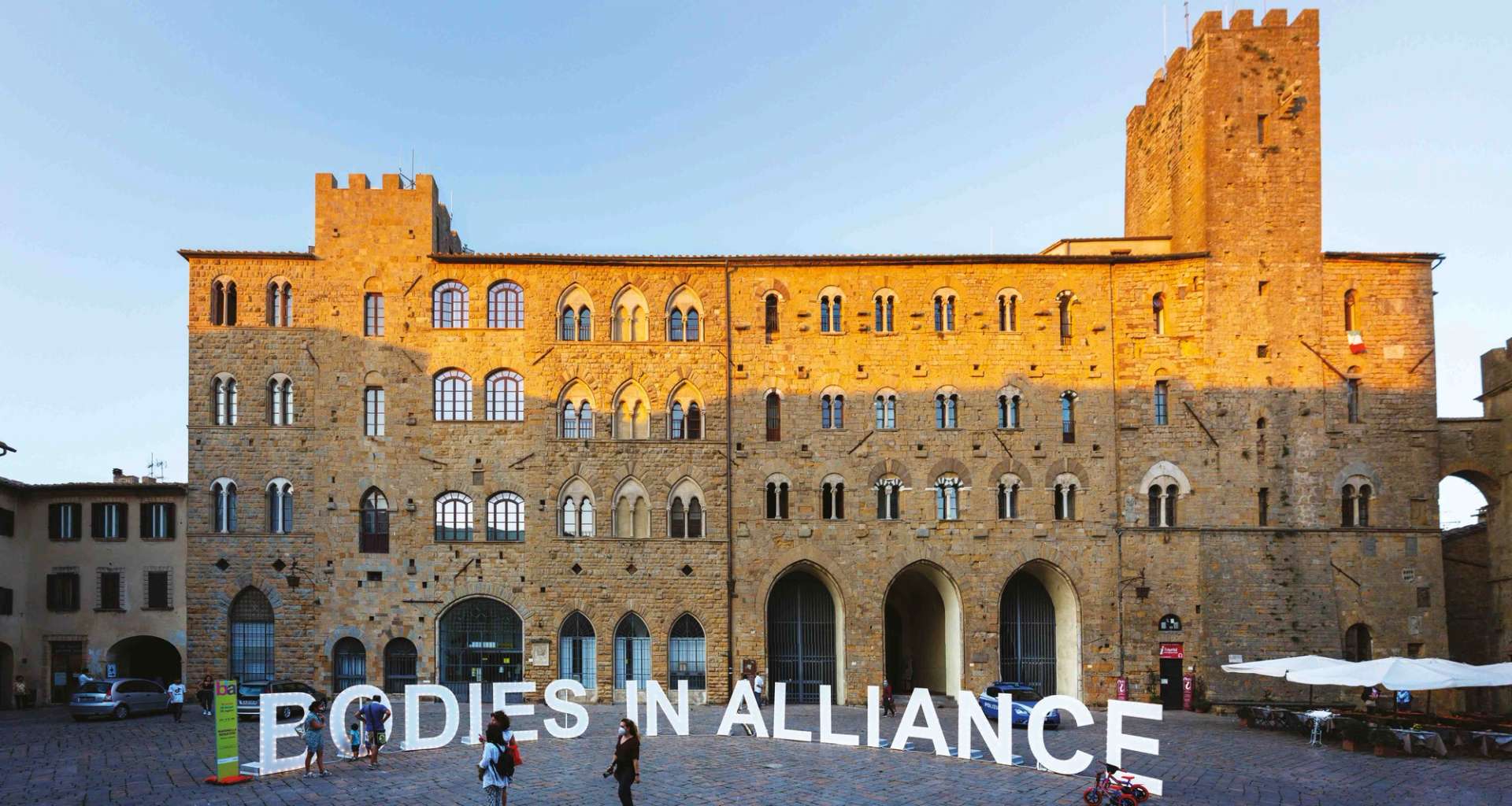Senatore makes reference to the notion of “commons,” where “common goods” are those cultural and natural resources that ideally should be equally accessible to all of society. In essence, she’s interested in new modes of living based on evenness across the board, commonalities that help create empowerment. In this case, these “new modes” are activated by the artist and her specific interventions, both physical and social, in public space. In the Piazza dei Priori, long a gathering space and frame of reference, a fluid and site-specific installation is a horizontal platform on which different elements generate energetic movement, and thereby potentially shared narration. The installation is described as “fluid” based on a potentially infinite inclusion of the elements in play.
Bodies in Alliance, a phrase borrowed from Judith Butler, is formed by a series of wooden sculptural elements, inspired by the traditional luminary setup and placed in different points of the square. Amid the sadness of the 2020 pandemic, with the forced isolation it brought about, the position of both the individual and collective body was completely thrown into question. New ways of relating were forcibly created, particularly in the physical realm, shedding light on just how much closeness was taken for granted previously, and how it is now more essential than ever. But the concept of community, of sentimental and social alliance, is a possible guidepost for better understanding and transforming human relationships.
COMBINING ASSONANT AND DISSONANT ELEMENTS, WE SOUGHT A NARRATIVE SHORT-CIRCUIT THAT COULD GENERATE VISIONS OF NEW POSSIBILITIES
Marinella Senatore (Cava De' Tirreni, 1977) is a multidisciplinary artist whose practice contains a strong participatory element and an ongoing dialogue between history, popular culture and social structures. Bodies in Alliance is not just a temporary alteration of public space, but a symbol of a social space where the individual can ignite a personal interaction, which immediately transforms into a connection with the other from him - or herself.
"BODIES IN ALLIANCE", A PHRASE BORROWED FROM JUDITH BUTLER, IS FORMED BY A SERIES OF WOODEN SCULPTURAL ELEMENTS, INSPIRED BY THE TRADITIONAL LUMINARY SETUP AND PLACED IN DIFFERENT POINTS OF THE SQUARE. BUT THE CONCEPT OF COMMUNITY, OF SENTIMENTAL AND SOCIAL ALLIANCE, IS A POSSIBLE GUIDEPOST FOR BETTER UNDERSTANDING AND TRANSFORMING HUMAN RELATIONSHIPS
Volterra was founded by the Etruscans around the seventh century BC. Today traces of them remain in the Porta all’’Arco, the Etruscan Walls and the sanctuaries of the Acropolis. In Roman times monumental buildings were erected, such as the theater, baths and amphitheater. At the end of the ancient era, the city was transformed into an important episcopal center, to the point of becoming a municipality in medieval times. The entire historical center –its churches, walls, tower houses and palaces–makes up the city’s image in the public imagination. Volterra holds what was the first public palace in Tuscany, Palazzo dei Priori (1208), which stands on the square of the same name, one of the most architecturally interesting in Italy. Today, most of its masterpieces are exhibited in museums: the Guarnacci Etruscan Museum, the Civic Art Gallery, and the Diocesan Museum. Still others are preserved in their original contexts, inside the churches, particularly in cathedral of Santa Maria Assunta. All throughout the historic center you’ll find local traditional handicrafts in abundance, namely, alabaster workmanship, seen both in shops along the streets and in the Alabaster Museum (Ecomuseo dell’Alabastro).

